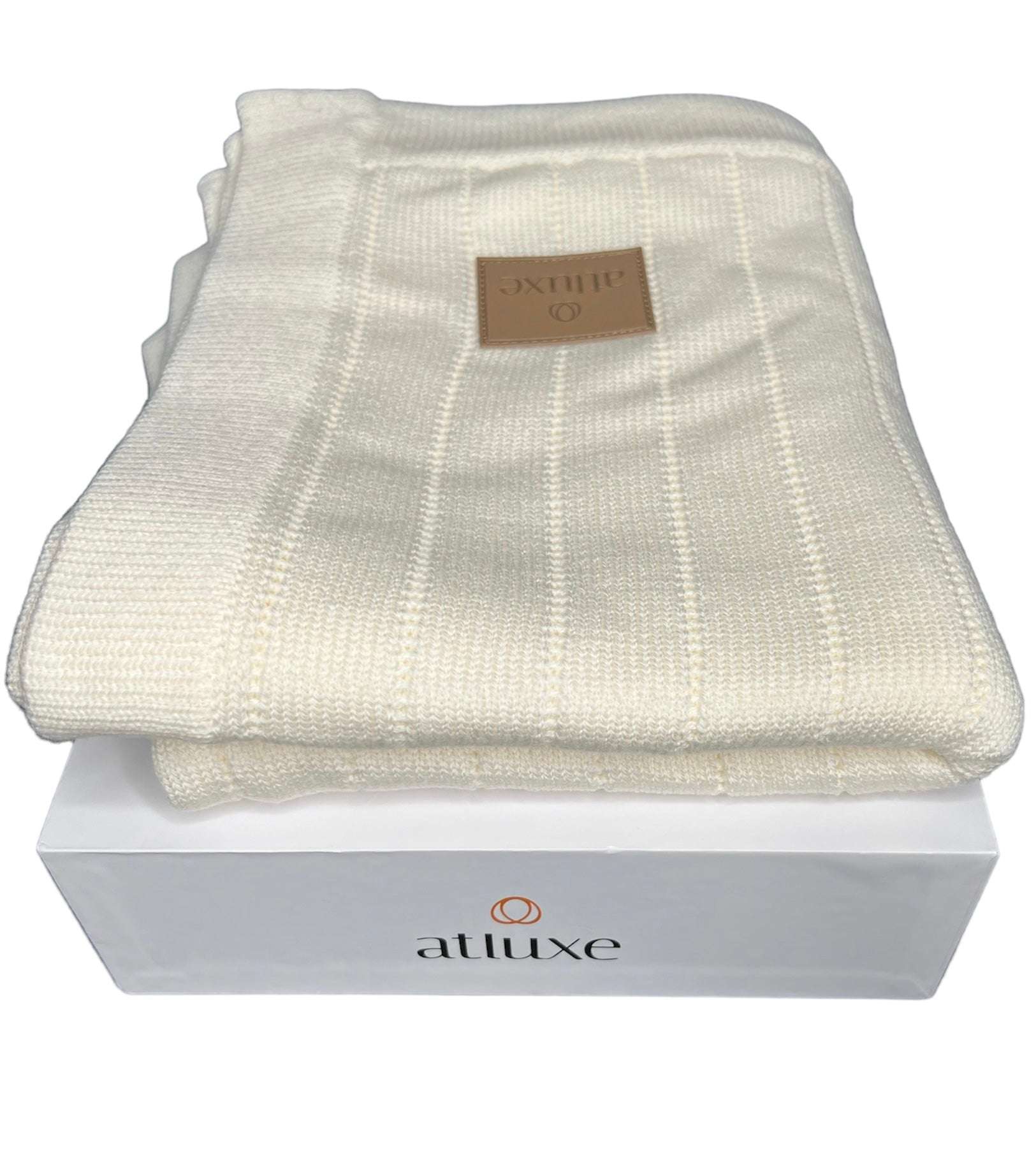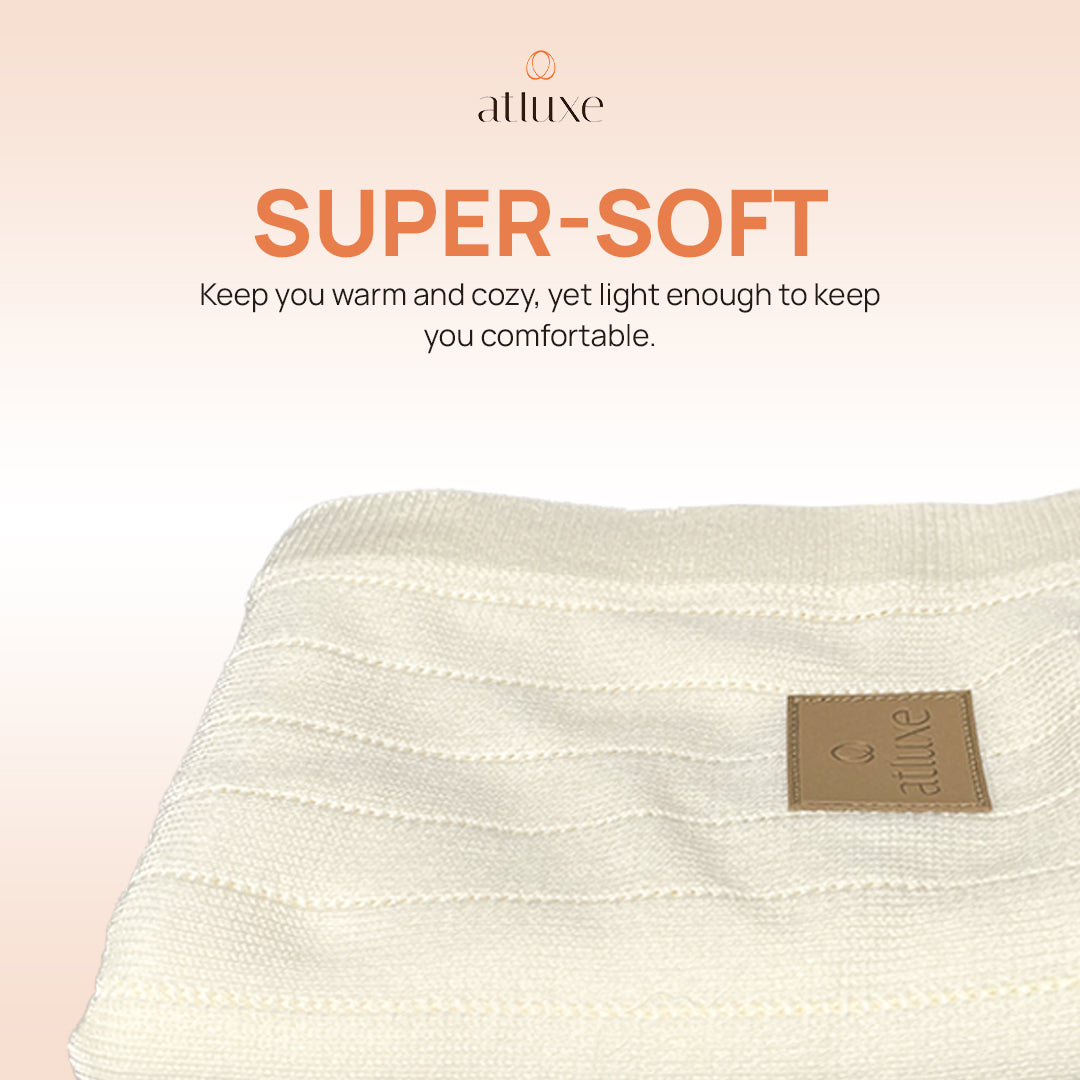Safely Swaddle a Baby: Essential Safety Tips for Safe Swaddling Your Baby with a Swaddle Blanket
Are you swaddling your baby the right way? Is your baby's blanket secure and safe? Swaddling is a common practice that provides comfort and security to newborns, but it's important to ensure that you are swaddling your baby safely to prevent any potential harm.
In this section, I will discuss the importance of swaddling safely and provide tips for securely swaddling your baby using a blanket. By following these guidelines, you can keep your little one snug and sound while promoting a safe sleep environment.
Key Takeaways:
- Swaddling can provide comfort and security to newborns.
- It's essential to swaddle your baby safely to prevent any potential harm.
- In this section, we will discuss the importance of safe swaddling and provide tips for securely swaddling your baby using a blanket.
- By following these guidelines, you can keep your baby snug and sound while promoting a safe sleep environment.
- Stay tuned for expert advice on how to swaddle your baby safely.
Swaddle Safely: A Step-by-Step Guide to Safely Swaddle Blanket Your Baby for Safe Sleep with Benefits and Safety Tips
When it comes to ensuring your baby's safety during sleep, following the recommended guidelines is crucial. The American Academy of Pediatrics (AAP) has provided important recommendations to help prevent Sudden Infant Death Syndrome (SIDS) and other sleep-related incidents.
The AAP advises parents to always place their baby on their back for sleep. This position reduces the risk of SIDS and suffocation. It's essential to create a safe sleep environment by removing any loose bedding, soft objects, or pillows that could pose a suffocation hazard.
"The safest place for your baby to sleep is on a firm and flat surface, such as a crib or bassinet, free from pillows, blankets, and other items that may obstruct breathing."
According to pediatric experts, it's important to place your baby to sleep in their own sleep area in close proximity to your bed. This arrangement can reduce the risk of SIDS while also making nighttime feedings and comforting more convenient for parents.
It's also crucial to be aware of the factors that increase the risk of SIDS. These include having your baby sleep on their stomach or side, exposure to smoke during pregnancy or after birth, premature birth, and an overheated sleep environment.
To further minimize the risk of SIDS, it's recommended to breastfeed your baby, as it has been shown to reduce the likelihood of SIDS. Additionally, immunizing your baby according to the schedule recommended by pediatricians can also help protect against SIDS.
By understanding and following these safe sleep recommendations, parents can provide a secure sleep environment for their little ones and reduce the risk of SIDS and other sleep-related incidents.
Key Points:
- Place your baby on their back for sleep to reduce the risk of SIDS.
- Ensure a safe sleep environment by removing loose bedding and soft objects.
- Keep your baby's sleep area in close proximity to your bed.
- Avoid exposing your baby to smoke and maintain a temperature-appropriate sleep environment.
- Breastfeed your baby and follow the recommended immunization schedule to further reduce the risk of SIDS.
Swaddling Technique: Step-by-Step Guide to Swaddling Safe
Swaddling your baby is a wonderful way to provide comfort and security. By wrapping your little one in a snug blanket, you can help mimic the feeling of being in the womb. However, it's important to swaddle your baby safely to prevent any risks or discomfort. In this step-by-step guide, I will walk you through the proper swaddle technique to ensure your baby's safety and comfort.
Gather the essentials
To begin, gather everything you'll need for swaddling your baby:
- A lightweight, breathable blanket
- A flat, safe surface to lay your baby on
- Ensure your baby is dry and in a calm state
Position the blanket
Lay the blanket on a flat surface, like a bed or changing table, with one corner at the top and the other corner at the bottom. The blanket should form a diamond shape with the top corner pointing towards you.
Place your baby
Place your baby on their back in the center of the blanket, with their head aligned with the top corner. Make sure their neck and shoulders are fully supported.
Secure the right arm
Take the right corner of the blanket and gently bring it across your baby's body, tucking it securely under their left arm. Ensure the right arm is snugly wrapped against their body, but be mindful of not swaddling too tightly to restrict movement or circulation.
Secure the left arm
Next, take the left corner of the blanket and bring it across your baby's body, tucking it under their right arm. The left arm should be snugly wrapped against their body alongside the right arm.
Wrap around your baby
Take the bottom corner of the blanket and lift it over your baby's feet, tucking it securely underneath their body. The blanket should now be snugly wrapped around both arms and torso, but loose enough for your baby to move their legs freely.
Finishing touches
Make sure the swaddle is secure and your baby's face is unobstructed. The blanket should be snug but not too tight, allowing your baby to breathe comfortably. Remember to check that the swaddle is not covering their nose or mouth.
https://www.youtube.com/watch?v=wOG_O7aH4Ag
Remember, swaddling safe is the key to a comfortable and secure swaddle for your little one.
Hip-Healthy Swaddling: Tips for Avoiding Hip Dysplasia
When swaddling your baby, it's important to prioritize their hip health. Improper swaddling techniques can increase the risk of hip dysplasia, a condition where the hip joint is not properly formed. To ensure your baby's comfort and safety, follow these tips for hip-healthy swaddling:
- Tuck the blanket under your baby's right arm, making sure it is snug but not too tight. This allows for natural movement and development of the shoulder joint.
- Bring the blanket across your baby's chest and tuck it securely under their left arm. This creates a secure swaddle while still allowing freedom of movement for the left arm.
- Avoid wrapping the blanket too high up on your baby's face. Make sure there is enough space for your baby to breathe comfortably.
- Position your baby's legs in a way that promotes healthy hip development. The legs should be able to bend up and out at the hips. Avoid tightly wrapping your baby's legs straight down or pressing their legs together.
By following these guidelines, you can ensure that your baby is swaddled in a way that promotes healthy hip development and reduces the risk of hip dysplasia. Remember, your baby's comfort and safety should always be the top priority.
Here is an image showcasing the correct positioning of the baby's legs during hip-healthy swaddling:
Common Mistakes to Avoid for Hip-Healthy Swaddling
| Mistake | Consequence |
|---|---|
| Tightly wrapping the blanket around the baby's chest | Restricts breathing and can lead to overheating |
| Wrapping the legs straight down | Puts pressure on the hip joints and increases the risk of hip dysplasia |
| Pressing the baby's legs together | Restricts natural hip movement and can lead to hip dysplasia |
| Wrapping the blanket too high up on the baby's face | Increases the risk of suffocation |
Swaddle Wraps and Wearable Blankets: Alternatives to Traditional Swaddling
If you're looking for alternatives to traditional blanket swaddling, swaddle wraps and wearable blankets offer safe and convenient options for your little one. As your baby starts to wiggle and explore their surroundings, it's important to follow safe sleep recommendations while providing them with a cozy and secure sleeping environment.
The Benefits of Swaddle Wraps
Swaddle wraps are designed to imitate the feeling of being in the womb, comforting babies and helping them feel secure. These wraps are usually made of soft, breathable fabric and feature adjustable fasteners to snugly wrap your baby's torso and arms. The open-ended design allows for easy diaper changes, making it a practical choice for both day and nighttime use.
Some of the benefits of using swaddle wraps include:
- Providing a womb-like environment that soothes and comforts your baby
- Promoting better sleep by preventing the startle reflex that can wake your baby
- Reducing the risk of Sudden Infant Death Syndrome (SIDS) by promoting safe sleeping positions
Exploring Wearable Blankets
Wearable blankets, also known as sleep sacks or swaddle sacks, are another popular alternative to traditional swaddling. These blankets are made of soft, breathable materials and feature a zippered or snap closure for easy use. The design allows your baby to have their arms free while keeping their body comfortably covered.
Here are some reasons to consider using wearable blankets:
- Ensuring your baby's left arm is free to help regulate their body temperature
- Allowing your baby to self-soothe by sucking on their fingers and hands
- Promoting safe sleep by preventing loose blankets from covering your baby's face
Whether you choose a swaddle wrap or a wearable blanket, both options provide a safe and snug sleep environment for your baby, helping them feel secure and promoting better sleep patterns.
Swaddle wraps and wearable blankets offer safe and convenient options for providing a cozy and secure sleeping environment for your baby.
Tips for Transitioning Away from Swaddling
As your baby grows, they will eventually outgrow the need for swaddling. Transitioning away from swaddling can be a gradual process to ensure a smooth and comfortable transition for your little one. Here are some tips to help you navigate this important milestone:
- Observe your baby: Pay close attention to your baby's sleep patterns and behavior to determine when they are ready to transition away from swaddling. Look for signs of increased mobility, such as attempts to roll over or break free from the swaddle.
- Consult NCT new baby courses: NCT (National Childbirth Trust) new baby courses can be a valuable resource for new parents. They offer guidance and support on various topics, including safe sleep practices and transitioning away from swaddling. Attending these courses can provide you with the information and confidence you need to make the transition.
- Start with short intervals: Begin by gradually reducing the amount of time your baby spends swaddled. You can start by leaving one arm or one leg free while swaddling the rest of their body. This allows your baby to adjust to the feeling of having some freedom of movement.
- Introduce a sleep sack: Consider using a sleep sack or wearable blanket as an alternative to swaddling. These provide a sense of security while allowing your baby to move their limbs more freely. Make sure to choose a sleep sack that is appropriate for the current season to ensure your baby stays comfortable.
- Encourage self-soothing: Help your baby develop self-soothing techniques by introducing a comfort object, such as a soft toy or a pacifier. This can provide your baby with a source of comfort and security as they adjust to sleeping without the swaddle.
- Create a relaxing sleep environment: Establish a bedtime routine that promotes relaxation and signals to your baby that it's time to sleep. Dim the lights, play calming music, and ensure the room temperature is comfortable. Creating a soothing environment can help your baby settle down and sleep more soundly.
Remember, every baby is different, and the transition away from swaddling may take time. Be patient and flexible as you navigate this change. If you have any concerns or questions, consult your pediatrician for personalized guidance.
Transitioning away from swaddling can be a bittersweet milestone for both parents and babies. It signifies a new phase of growth and independence for your little one. By following these tips and being attuned to your baby's needs, you can ensure a smooth transition and reduce the risk of Sudden Infant Death Syndrome (SIDS) associated with continued swaddling.
Next, we'll explore essential safety tips for swaddling that are specifically tailored to new parents. These tips will provide you with the knowledge and confidence to swaddle your baby safely and effectively.
Swaddling Safety Tips for New Parents
As a new parent, swaddling your baby can provide a sense of security and comfort. However, it's important to follow safe sleep guidelines and swaddling techniques to ensure your little one's safety and well-being.
Here are some essential swaddling safety tips:
- Choose the right blanket: Use a lightweight, breathable blanket made specifically for swaddling. Avoid heavy or bulky fabrics that can cause overheating.
- Position the blanket correctly: Lay the blanket on a flat surface, like your bed or changing table, in the shape of a diamond. Place your baby's head slightly above the top edge of the blanket.
- Place your baby in the center: Lay your baby face-up on the blanket so that their shoulders align with the top edge. Leave enough room at the bottom corner of the blanket to fold it over your baby's feet.
- Secure the arms: Gently hold your baby's right arm alongside their body, and bring the right side of the blanket across their chest, tucking it under their left arm. Then, hold their left arm alongside their body and bring the left side of the blanket across their chest, tucking it under their right arm.
- Wrap the bottom corner: Lift the bottom corner of the blanket and fold it over your baby's feet, creating a snug pocket. Make sure there is enough room for your baby's legs to bend and move naturally.
- Avoid overheating: To prevent overheating, ensure your baby is dressed in light clothing appropriate for the room temperature. Feel the back of their neck or chest to check if they're too hot.
- Monitor your baby: Always keep an eye on your baby while they're swaddled to ensure they're comfortable and safe. Check for signs of overheating, such as sweating or flushed skin.
Remember, swaddling can encourage your newborn to sleep better, but it's crucial to follow these safety tips to reduce the risk of suffocation or other accidents. If you're unsure about swaddling or have any concerns, consult your pediatrician for guidance.
Expert Tip:
"Swaddling can be a wonderful way to soothe your baby and promote better sleep. Just make sure to follow safe sleep guidelines and use the diamond shape technique to keep your little one safe and snug." - Dr. Jane Richards, Pediatrician
By following these swaddling safety tips, you can swaddle your baby in a way that promotes comfort and security, without compromising their safety. Remember to always prioritize safe sleep guidelines and regularly check on your baby to ensure they are sleeping soundly.
Finding Support and Resources for Safe Swaddling
As new parents, it's normal to have questions and seek guidance when it comes to swaddling your baby. Luckily, there are various resources and support networks available to you. Whether you prefer to connect with other parents in your area or join online communities, you'll find valuable information and support to ensure you swaddle your baby safely.
Local Parenting Groups
Joining a local parenting group is an excellent way to connect with other new parents who are also navigating the world of swaddling. These groups often have experienced leaders who can provide practical tips and share their knowledge about hip-friendly swaddling techniques. You'll have the opportunity to ask questions and learn from their expertise, creating a supportive community for you and your baby.
Online Communities
Online communities offer a convenient platform to interact with other new parents, especially if you don't have access to local parenting groups in your area. Participation in online forums and social media groups allows you to engage in discussions, share experiences, and exchange advice on safe swaddling practices. Remember, the internet can provide a wealth of information, but always prioritize reliable sources and consult your pediatrician for medical advice.
Joining a parenting group, either in person or online, not only offers valuable advice but also allows you to connect with other new parents going through similar experiences. You'll find reassurance, tips, and a sense of belonging as you embark on your swaddling journey together.
| Benefits of Joining Parenting Groups and Online Communities | Risks of Joining Parenting Groups and Online Communities |
|---|---|
|
|
Remember, it's important to critically evaluate the information you come across and cross-reference it with trusted sources. Your baby's safety is the priority, so always consult with professionals and trusted individuals.
Together with the information obtained from local parenting groups and online communities, you'll be equipped with the knowledge and support needed to swaddle your baby safely. Connecting with other new parents can be a valuable source of guidance and reassurance, ensuring that you provide your little one with the best care during this precious time.
Conclusion
Ensuring the safety of your baby is essential, especially when it comes to sleep. Swaddling can be a wonderful technique to soothe and comfort your little one, but it's crucial to do it correctly and safely.
Remember, when swaddling your baby, always place them on a flat surface and ensure that their face is always visible, with enough room to breathe. Use a light blanket and wrap your baby like a "baby burrito," making sure to tuck the blanket securely under their back.
While swaddling can increase the chances of your baby sleeping peacefully, it's important to know about safe sleeping guidelines as well. As your baby grows, you may need to transition them away from swaddling to reduce the risk of tight swaddles and encourage their natural movement.
By swaddling in accordance with other safe sleep practices, you can become a swaddling pro in no time. So, wrap your baby up tight, keeping their arms secure with a three-finger space and their legs in a hip-healthy position, and rest easy knowing that you're creating a safe sleep environment for your little one.
FAQ
Why is it important to swaddle a baby safely?
Swaddling can help soothe and comfort your baby, but it's crucial to do it safely to reduce the risk of suffocation or hip dysplasia. By swaddling your baby securely and following safe sleep guidelines, you can create a safe sleep environment.
What are the safe sleep recommendations and risks associated with SIDS?
The American Academy of Pediatrics (AAP) recommends placing your baby to sleep on their back on a firm and flat surface to reduce the risk of Sudden Infant Death Syndrome (SIDS). It's important to create a safe sleep environment, free from suffocation hazards such as loose bedding or toys.
How can I safely swaddle my baby using a blanket?
To safely swaddle your baby, start by placing a blanket in a diamond shape on a flat surface. Fold the top corner down and place your baby's shoulders just below it. Take the left side of the blanket and tuck it underneath your baby's body, leaving their right arm free. Then, bring the bottom corner of the blanket up and tuck it under the back of your baby's left shoulder. Finally, tuck the remaining right side of the blanket loosely under your baby's body. Remember to leave enough room for your baby to move their legs and hips.
How can I swaddle my baby while avoiding hip dysplasia?
To swaddle your baby in a hip-healthy position, make sure to leave enough room for their legs to move freely. Position your baby's legs so they can bend up and outwards. This allows for healthy hip development and reduces the risk of hip dysplasia.
Are there alternatives to traditional blanket swaddling?
Yes, there are alternatives such as swaddle wraps and wearable blankets. These products provide a safe and secure swaddling experience while reducing the risk of the blanket becoming loose or covering your baby's face. They are designed to allow natural movement of the legs and hips, promoting healthy development.
How can I transition my baby away from swaddling?
As soon as your baby starts showing signs of outgrowing swaddling or is able to roll over, it's important to transition them away from swaddling to reduce the risk of suffocation. Gradually start swaddling with one arm out, then both arms out, until your baby no longer needs to be swaddled. Consult with your pediatrician if you need assistance or guidance during the transition process.
What are some safety tips for new parents who are swaddling their baby?
When swaddling your baby, ensure that the blanket is secure and not too tight. Place your baby on their back and position their arms at their sides or across their chest. Make sure to wrap the blanket snugly, but leave enough room for your baby to breathe comfortably. Always follow safe sleep guidelines and avoid loose bedding or toys in the sleeping area.
Where can I find support and resources for safe swaddling?
There are many resources available to new parents, including parenting groups, online communities, and courses offered by organizations like the NCT. These support networks can provide valuable information, guidance, and connect you with other parents who are also navigating the world of safe swaddling.








Leave a comment